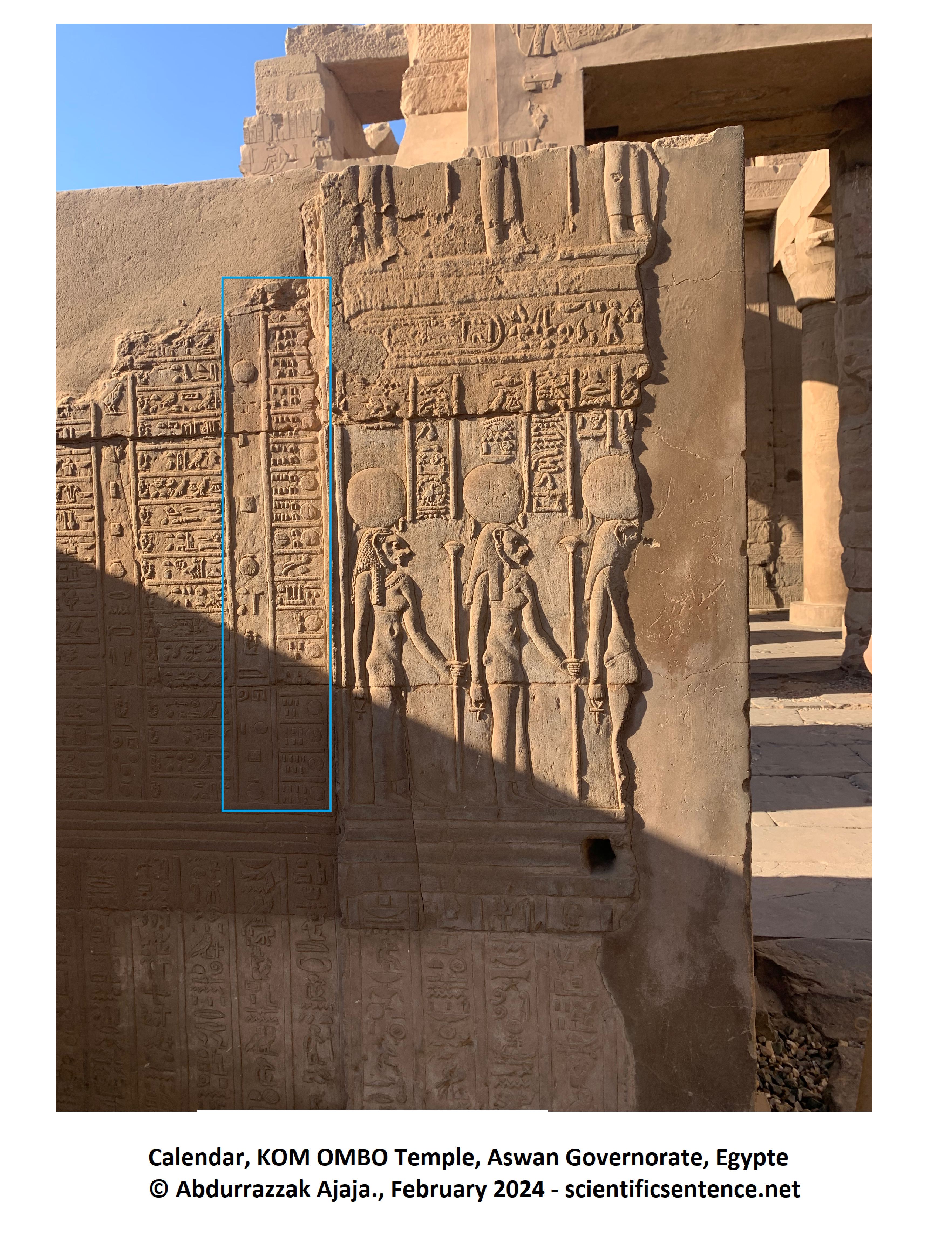Articles divers
© The scientific sentence. 2010

| |
|
Articles
Sciences and Societies
The ancient Egyptian calendar
The ancient Egyptian calendar
The first calendar adapted to the environment
Greetings from Aswan, Egypt..
The invention and use of a calendar dates back more than 5 thousand years.
In Ancient Egypt, one understood the importance of an organizational system to refer to
a specific set of events, past or future. The calendar specified and organized the lives
of the Ancient Egyptians in the natural world that supported them.
 The ancient Egyptian calendar appeared at the beginning of the third millennium BC. It would therefore be the first known solar calendar in history.
The ancient Egyptian calendar appeared at the beginning of the third millennium BC. It would therefore be the first known solar calendar in history.
Called the Nilotic calendar, It was based on the annual fluctuations of the Nile and had as its objective the regulation of agricultural work during the year, defined as "the time necessary for a harvest".
The Egyptians realized that the beginning of the Nile's rise and floods roughly coincided with the heliacal rising
of the brightest star in the sky, Sirius, called Sopdet, or later transcribed into Greek as Sothis.
The heliacal rising of a star is its appearance on the eastern horizon at dawn. The heliacal rising of the star Sothis takes place on July 19 according to the current calendar.
The Egyptians, a people of farmers, therefore suited them better to adopt their calendar on the cycles of the Nile. They then decided to set the start of the year on the first day of the first month of the Akhet season, the start of the floods.
The Nilotic calendar year is made up of 3 seasons of 4 months of 30 days each. Which therefore makes a total of 30 x 4 x 3 = 360 days. Each month was subdivided into three weeks, and each week had 10 days.
 The seasons were named Akhet (flood season), Peret (crop season), and Shemu (
harvest season and their taxation). On the other hand, neither the months nor the days were named. They had numbers: 1-2-3-4 in the 4 month season and 1 to 30 for the days.
The seasons were named Akhet (flood season), Peret (crop season), and Shemu (
harvest season and their taxation). On the other hand, neither the months nor the days were named. They had numbers: 1-2-3-4 in the 4 month season and 1 to 30 for the days.
The 5 missing days of the year, called epagomenal or additional days, are added at the end of the calendar,
after the last day of the Shemou season. They are considered the birth days of the 5 main Gods: Osiris, Horus,
Seth, Isis and Nephthys.
In the Julian calendar, these five days correspond to July 14, 15, 16, 17 and 18.
-- Abdurrazzak Ajaja
February 2024
|
|